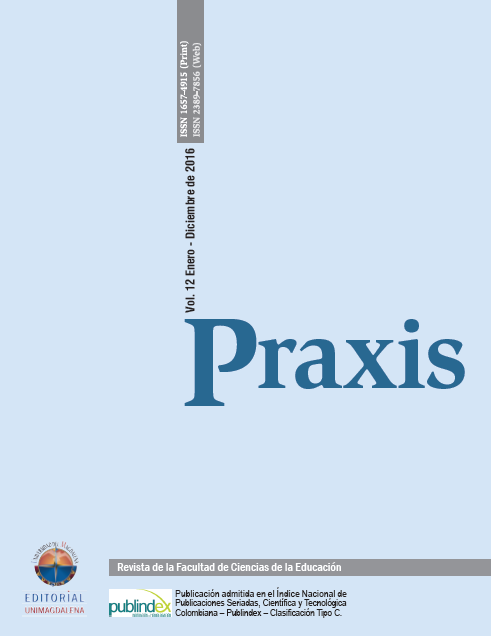Abstract
In this research, a model for educational planning of teaching is presented; the design is based on Didactic Units and the perspectives to higher level education. This is intended to enhance understanding of Chemical Bonding Concept, identifying some of the difficulties students have to understand the interaction between atoms from the macroscopic properties of substances, with the complexity this demands. The research is empirical with the constructivist point or view. The test Covalent Bond and its structure was applied as a diagnostic tool to 42 students of Chemistry and Bachelor of Natural Science and Environmental Education of the Universidad Pedagógica y Tecnológica de Colombia, (UPTC) the perception of this topic becomes a field that allows to explain the natural phenomena and its accurate explanation allows, on one hand, to avoid the students adapt conceptual mistakes, and on the other, foster meaningful learning in them.References
Caamaño, A. (2013). Hacer Unidades Didácticas una tarea fundamental en la planificación de las clases de Ciencias. Revista Alambique Didáctica de las Ciencias Experimentales. Num. 74. pp. 5–11.
Campanario, J. M. & Moya, A. (1999). Cómo enseñar ciencias principales tendencias y propuestas. Enseñanza de la ciencia, 17 (2), 179-192.
Couso, D., Badillo, E., Perafán, G. & Bravo, A. (2005). Unidades didácticas en Ciencias y Matemáticas. 2005. 9–30.
Curtin University or Tecnnology. Test de Enlace Covalente y su Estructura. Centro de Ciencia y Educación Matemática, Curtin University of Technology, Kent Street, Bentley, WA 6102.
Izquierdo Aymerich, M. (2004). Un Nuevo Enfoque de la Enseñanza de la Química: contextualizar y Modelizar. V. 92 N°. 4-6 Buenos Aires Ago./Dic.
Rincón A. & De Latorre, A. (1992). Síntesis de las Características de los Paradigmas de Investigación en Educación. 43.
García, A., Garritz, A., & Chamizo, J. A. (2008). Hacia el cambio conceptual en el Enlace Químico. Propuesta constructivista para mejorar el aprendizaje en el Bachillerato y Licenciatura.
Gillespie, R. (1997). La gran idea de la Química. Journal of Chemical Education. 74 (7). 862-864.
Kutzelnigg, W. (1984). Chemical Bonding in Higher main group elements. Angewandte Chemie International.Ed. In English. 23. 272- 295.
Pauling, L. (1992). The Nature of the Chemical Bond – 1992, journal of Chemical Education, 69 (6) 519-521.
Peterson, R. F., Treagust, D. F. & Garnett, P. (1989). Development and application of diagnostic instrument to evaluate grade 11 and 12 students´concepts of covalent bonding and structure following a course of instruction, Journal of Reseach in Science Teaching, 26 (4), 301-3014.
Sánchez, G. & Valcárcel M. V. (1993a). La utilización de un modelo de planificación de unidades Didácticas: el estudio de las disoluciones en educación secundaria. Enseñanza de las ciencias 15 (1), 35-50.
Sánchez G. & Valcárcel, M. V. (1993b). Diseño de unidades didácticas en ciencias experimentales. Enseñanza de las Ciencias, 11, 33-44.
Murillo, F. J. (2002). Apuntes de Métodos de Educación en Investigación. 203

